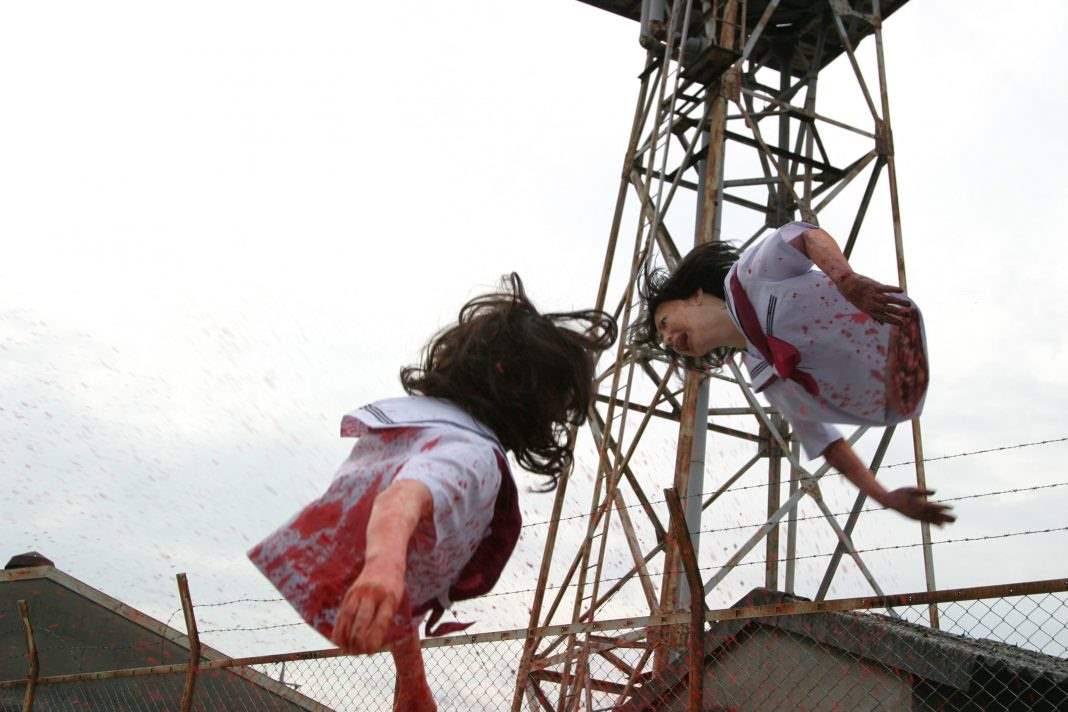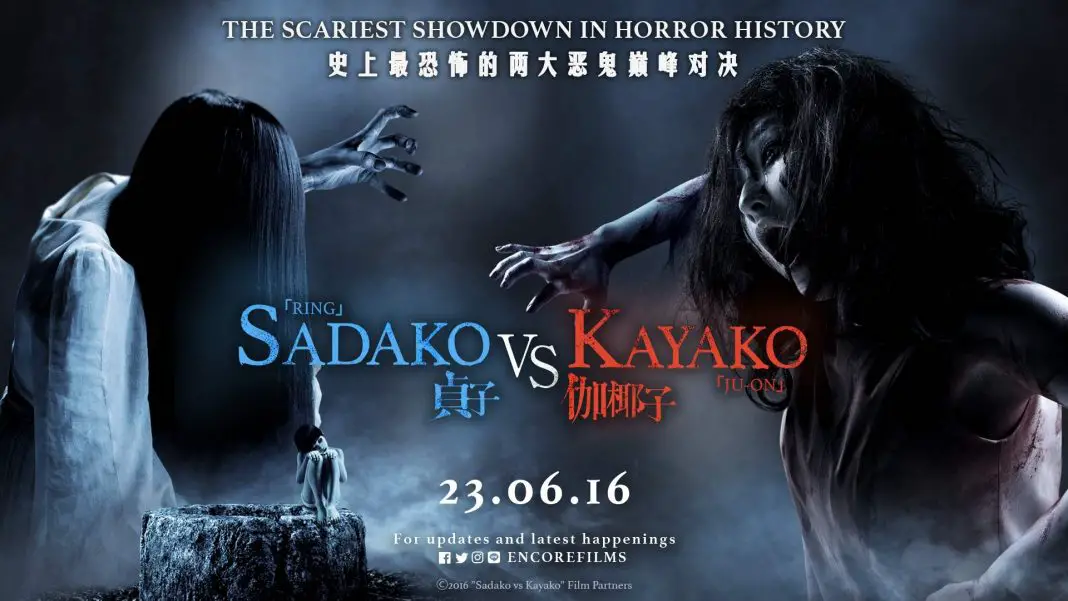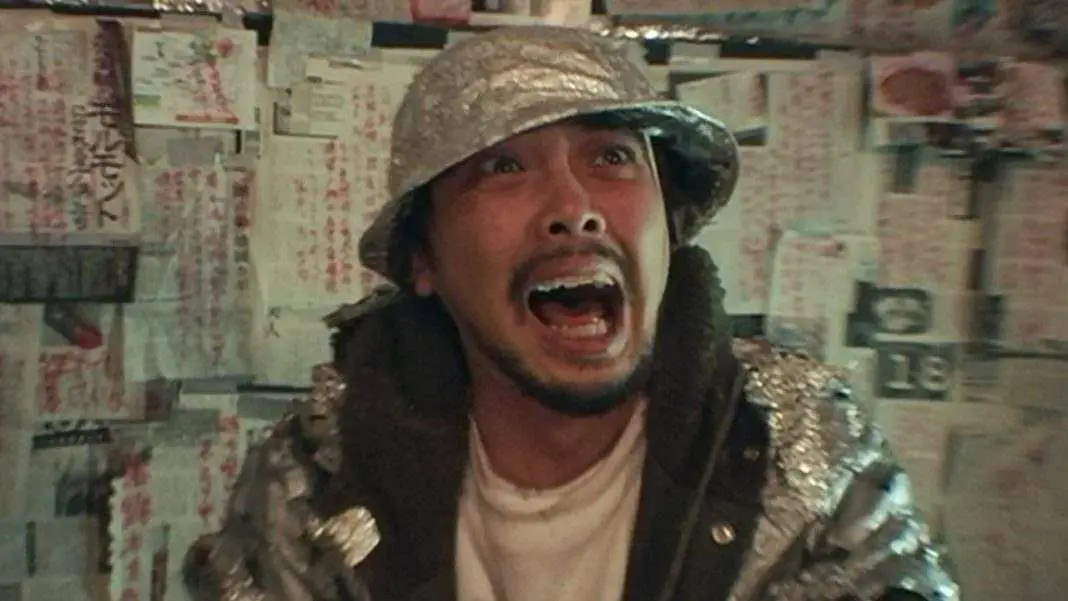Making his debut with 2004’s Ju-Rei: The Uncanny, Japanese director Kōji Shiraishi has gone on to distinguish himself as an inventive, adventurous filmmaker whose most recent work, 2016’s Sadako vs. Kayako, successfully combines two of Japan’s most famous horror franchises in a fun-yet-terrifying revisionist roller coaster ride. A fan of H.P. Lovecraft’s Cthulhu mythos and filmmakers as diverse as Sam Raimi and Abbas Kiarostami (with whom he shares the penchant of appearing as himself in his faux-documentaries), Shiraishi has demonstrated his ability to create works of extreme violence (Grotesque) and tastelessness (Hyper Villain, in which a serial rapist decked out like a character from Crazy Thunder Road contacts a magazine to see if they want to interview him and film his 108th rape), as well as sublime, unnerving studies in interpersonal and cosmic horror (Carved: the Slit-Mouthed Woman, Occult). And while “found footage film” has almost become a pejorative in recent years, Shiraishi has revisited the genre, for budgetary and creative reasons, numerous times throughout his career, exploring its possibilities and limits more than any other contemporary director (Alexandra Heller-Nicholas, in her book Found Footage Horror Films: Fear and the Appearance of Reality, considers Shiraishi’s work deserving of a book-length examination in its own right.) What follows is a list of Shiraishi’s films that you truly have to see to believe.
Teke Teke (2009)
“50 percent of all people are torsos,” comedian Demetri Martin once joked. Shiraishi’s Teke Teke is custom-made for this 50 percent, as it details the bloody rampage of urban legend Teke Teke, the ghost of a woman with no lower half who chases her victims by running on her hands, making the characteristic “teketeke” sound she’s named after. Some victims are sliced in half right away, while those she “spares” die three days later. Combining Evil Dead 2 visual exuberance with surprisingly thoughtful portrayals of teenage friendships, Teke Teke is a textbook-example of low-budget genre filmmaking done right. Its immediate sequel, Teke Teke 2, adds a new layer to the original story, as a bullied schoolgirl (played by Miu Nakamura, who would later star as the titular character in cult director Noboru Iguchi’s 2011 film Tomie: Unlimited) harnesses the power of Teke Teke to get revenge on her tormentors.

Carved: The Slit-Mouth Woman (2007)
One of Shiraishi’s better-known films due to its inclusion in the Tartan Asia Extreme film collection and frequent appearance on various streaming sites (mostly recently, Shudder), Carved follows a series of child abductions in present-day Japan which are being ascribed to the Slit-Mouthed Woman, a horrifying figure of urban legend. As the film progresses, we learn that the truth, while still supernatural, it is grounded in real-life horrors of child abuse, leading to a predictably downbeat ending characteristic of so many of the director’s films. What makes Carved work particularly well as a horror film is that Shiraishi stages the Slit-Mouthed Woman’s attacks in broad daylight, during scenes that are usually coded as “safe” in most films.

ADA: Vengeance Part One (“Terror”) and Part Two (“Despair”) (2013)
Employing a mix of documentary-style and “traditional” film footage, ADA (also known as Foe) depicts, from multiple points of view, a violent assault on a group of cram-school students perpetrated by two girls (one armed with a hammer, and the other decked out like the Slit-Mouthed Woman in a studded hoodie) and its aftermath. Behind all the mayhem lies a story of friendship and revenge, told primarily in the second film with its focus on the hammer-wielding Miho and her motivations. The deconstruction of the realistic, handheld-camera story of the first part by the more conventionally “fictitious” style of the second part makes ADA a surprisingly sophisticated film. Toss in some guest appearances by pop singers from the T-Palette Records roster and an unexpected, stinging critique of the for-profit education institution, and—in the words of Carl Weathers on Arrested Development—Baby, you got a stew going!

Noroi: The Curse (2005)
Invariably included in “found footage” Top-Ten lists, Shiraishi’s film opens with a dire warning: This video documentary is deemed too disturbing for public viewing. Things only get worse from there. Noroi is presented as the final documentary made by paranormal investigator Masafumi Kobayashi before a mysterious fire that lead to his wife’s death and his own disappearance. Shiraishi’s absolute mastery of the visual idiom of Japanese variety and “ghost hunter” shows is on full display here, drawing the viewer seamlessly into the lives of a disparate group of characters who discover a mutual connection with the demonic entity Kagutaba. Noroi is exceptional in the way it combines the investigative reveals of conventional film narratives with the immediacy and realism of found footage. After the credits on Kobayashi’s fictional documentary roll, a videotape is discovered which reveals the terrifying truth about what happened to the hapless filmmaker and his wife. Adding to the “real-life” feel of horror in the film, the director has pointedly refused to answer questions about Noroi in subsequent interviews.

Grotesque (2009)
Shiraishi’s notorious Grotesque is the story of a couple abducted and tortured by a sadistic doctor. In an interview with 3:AM Magazine, the director revealed that producer Takafumi Ohashi urged him to make an extremely violent and gory film. Banned in Denmark and illegal to sell or supply anywhere in the UK, it’s safe to say Shiraishi succeeded with this minimalist, virtually-plotless exercise in torture-porn. Like A Serbian Film and Men Behind the Sun, this is a film the viewer endures rather than watches. Shiraishi would go on to parody the depraved reputation he earned with this film in 2010’s Cursed Violent People, a dark comedy in which the director is forced by circumstances to collaborate on a movie with “real” criminals.

Ju-Rei: The Uncanny (2004)
An absolute guilty pleasure, Ju-Rei: The Uncanny is a shameless rip-off of Takashi Shimizu’s Ju-on series, right down to its croaking ghosts and non-chronological chapter motif (although here, instead of being complexly interwoven as in Ju-on, the chapters simply unfold in reverse order.) Shot on video in 2004, Ju-Rei’s glacial pace is ultimately more of an issue than its derivative, blurry ghosts, while its eerie soundtrack and occasional bits of atmosphere (both present in its opening chapter, for example) become endearing upon repeated viewings.

Occult (2009)
For me, Occult is an even more effective piece of faux-documentary than Noroi: The Curse. Behind its supernatural trappings lurks an all-too-real horror: A man who believes he’s on a divine mission to commit an act of terrorism. Occult’s pulsing, hypnotic soundtrack—all industrial scrapes and throbs—helps drag us deeper into the mindset of the main character and the director he has indoctrinated (Kōji Shiraishi, playing himself), while fellow filmmaker Kiyoshi Kurasawa (Pulse) pops up in a few scenes to add verisimilitude to the nightmarish events. It’s only during the final sequence of the film, where we are allowed a glimpse of a literal video-from-hell, that Occult’s budgetary limits impedes its visionary aspirations.

A Record of Sweet Murder (2014)
This micro-budgeted Japanese-Korean co-production written and directed by Shiraishi actually got a write-up in Variety upon its premiere in 2014! The film follows a Korean journalist and her cameraman (played, albeit off-screen, by Shiraishi himself), as they meet with the journalist’s childhood friend, a serial killer on a divine mission who believes if he kills 27 people, he can resurrect another childhood friend who was killed in a car accident. This found footage experiment, which combines elements of Occult and Grotesque, is remarkable in that it is presented in an almost continuous 85-minute take in the confined setting of the killer’s apartment. Despite its gruesome and sometimes exploitative plot, the film ends with an unexpected “twist” as its emotional register completely changes during its final scenes.





